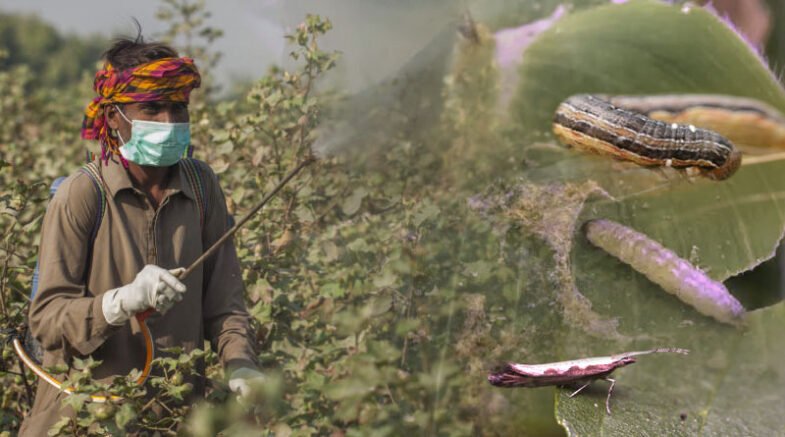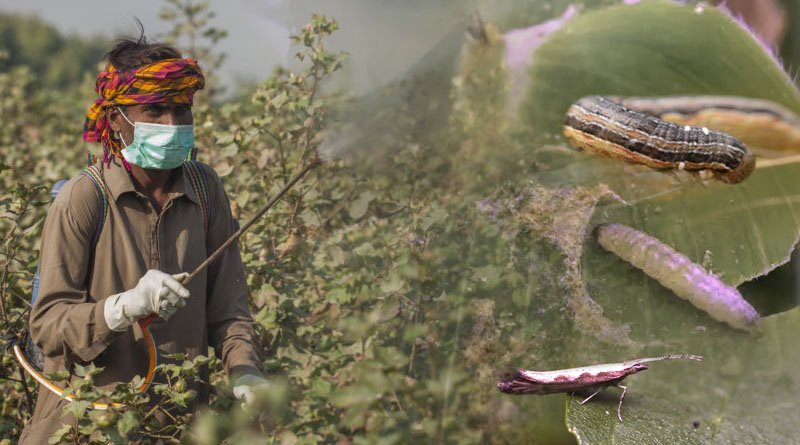Pakistan is basically an agricultural country, encompassing the most fertile alluvial plains, extending from the high hills in KPK province to the coastal areas of Sindh.

An ideal insect pest control strategy is to kill the “mother stock” just after overwintering emergence. Waiting for the “economic threshold hold level” to launch pest control operations requires heavy and repeated pesticide doses for optimal results.
Pakistan is basically an agricultural country, encompassing the most fertile alluvial plains, extending from the high hills in KPK province to the coastal areas of Sindh. The canal irrigation system of the state is one of the largest in the world.
Weather conditions are highly favorable for crop production. And above all, our farming community is incomparable for hard work. In spite of all this, we are continuously facing food shortages and malnutrition threats, and the situation is aggravating with the passage of time.
A critical review of the circumstances reveals that among the few lapses in our agriculture system, insect pests are important in taking their toll on field crops and stored commodities. Anyway, our plant protection specialists are actively trying their best to address this issue and other related problems.
They normally advocate the scientific procedure of ensuring an “economic threshold level” for initiating insect pest control measures, but the farmers rarely follow such instructions and always make unnecessary delays in launching pest control operations. In some cases, high prices play a major role in the limited or under dosed application of pesticides, which ultimately results in widespread insect pest attacks and a reduction in crop yield.
Under the prevailing circumstances, the in vogue old insect pest control system needs to be reviewed for safer and more effective results. Weaker links in the eco-biology of insect pests need to be investigated and exploited to timely trigger the insect pest control campaign on a massive scale.
Studies have indicated that temperature plays a vital role in the lives of arthropods. It has been observed that during the winter months, low temperatures minimize insect activities and kill most of their active populations. Only the tiny overwintering population survives as eggs, pupae, or in the hibernation phase at some safer places in wild herbage, shrubs, on tree trunks, in agricultural wastes, or at some abandoned sites in the field areas.
With the onset of the spring season, environmental temperature increases, which initiate biochemical reactions in the bodies of these tiny overwintering insect populations and activate them for further reproduction. Since the insects mostly deposit their eggs in clusters, after hatching, their nymphs and larvae congregate there for days (e.g., mango mealy bugs, red cotton bugs, rice stem borers, hairy caterpillars, sugarcane pyrillas, aphids, and white flies, etc.) to acclimatize themselves before shifting to and attacking the crops.
Basically, this small overwintering insect population is called “mother stock,” which is very important to be immediately controlled before it shifts to crops and multiplies there to attain the economic threshold level: the specific insect number per leaf for recommending pesticide application.
In insects, egg hatching or pupae development is strictly a time, humidity, and temperature related activity. A particular degree of spring temperature and its duration that provoke egg hatching and revives/activates the small overwintering insect population (hibernation populations) to attack the crops is called the “thermal constant”.
Now the correct calculations of this thermal constant and the dates during which it prevails is highly important and can positively be used to decide the timeframe for launching a massive control operation against this small overwintering insect pest population before it reaches crops, multiplies there to attain the number required for “economic threshold” or injury level”.
The effectiveness of this “New Insect Pest Control Strategy” mainly depends upon the correct assessment of the thermal constant by correlating it with insect activation or egg hatching activity at the overwintering stage and calculating the exact dates to be announced for launching a pesticide application campaign in a locality. In spite of a reliable and effective insect pest control approach, this strategy has hardly been followed in Pakistan. Richards and Davies (1957) have discussed this technique as the “Day Degree Method” in their book ” Imm’s General Textbook of Entomology.
Common sense dictates that over overwintering mother stock population of insect pests be controlled before it multiplies and reaches an economic threshold or injury level, meaning “nip the evil in the bud”. Delay in initiating control operations at this stage will favor a small insect pest population to develop into a large one, which is incorrect. In fact, a naturally minimized overwintering insect population is easily controlled with the minimum use of pesticides. Furthermore, at this stage, the chances for the insects to escape are low.
On the other hand, controlling higher densities of insects after achieving an economic threshold is a wrong idea and a waste of resources. In this case, because a large cropping area will have to be sprayed, chances for insects to escape will be high, and frequent pesticide applications will be necessary for result oriented pest control operations.
The development of this new under discussion insect pest control strategy requires hectic experimentation on rearing them in laboratories as well as studying them under field conditions to investigate their temperature related eco-biological development parameters, like what winter temperature and its duration kill different insect pest species, in which phase (as eggs, pupae, or in hibernating phase) these insect species survive in the field during overwintering, at what thermal constant these species revive after overwintering, how much time these insects take to reach the egg-laying stage, and their hideouts in the field areas where they survive during overwintering.
All these experiments need to be repeated both in laboratory and field situations to judge any difference in the timings of all said events. This information will then be co-related with localized temperature/humidity data to assess the most feasible dates for launching a pest control campaign in a particular locality.
The calculated dates should then be announced through electronic media so that every farmer in the area may join this insect pest control campaign on the scheduled dates to get rid of the overwintering or mother stock insect pest population before it develops into big numbers or reaches the level of economic injury.
In the modern age, many million tons of pesticides are being added annually to croplands, which drastically increases environmental hazards. In the current situation, pesticide inputs have already destroyed the useful soil fauna and are successively elevating the fertilizer applications for improving crop yields.
Pesticide pollution is not only an alarming threat to human beings; the lives of all living beings are at stake. If properly investigated and implemented, this new pest control strategy will help minimizing pesticide pollution while reinforcing biological pest management, improving crop yields, and enhancing the net return from agriculture resources in the country.
This article is jointly authored by Prof./Subject Expert Dr. Rashid A. Khan, Associate Professor Department of Forestry & Range Mgt. University of Agriculture, Faisalabad Dr. Fahad Rasheed and Ph.D. Scholar M.Usman.
